Search results for "sofi oksanen/feed/www.booksfromfinland.fi/2012/04/tuomas-kyro-mielensapahoittaja-ja-ruskea-kastike-taking-offence-brown-sauce"
Siiri Enoranta: Painajaisten lintukoto [Sweet haven of nightmares]
24 January 2013 | Mini reviews, Reviews
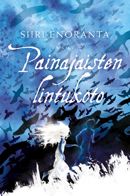 Painajaisten lintukoto
Painajaisten lintukoto
[Sweet haven of nightmares]
Helsinki: WSOY, 2012. 330 pp.
ISBN 978-951-0-38932-4
€26.90, hardback
Siiri Enoranta’s debut novel, Omenmean vallanhaltija (‘The Ruler of Omenmea’, Robustos, 2009) was nominated for the Finlandia Junior award, while another of her novels, Gisellen kuolema (‘The death of Giselle’) was nominated for the Runeberg Prize. Painajaisten lintukoto marks a departure from the genre Enoranta had focused on in her previous works. Her books incorporate the joy of spellbinding, spontaneous fantasy and skill at creating ever more uncanny settings. This novel is situated in the vacillating borderlands between sleep and the waking world. Lunni is a teenage boy who has been set a challenging task of overcoming nightmares and restoring natural sleep to people. The boy is joined by Tui, a mechanical girl. Other important figures in the story are giant tame birds that help Lunni and Tui get from place to place. The prose of Siiri Enoranta (1987) is lyrical, but it also contains points of contact for fans of fantasy writing of many different ages.
Translated by Ruth Urbom
Magdalena Hai: Kerjäläisprinsessa [The Beggar Princess]
24 January 2013 | Mini reviews, Reviews
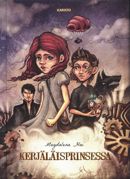 Kerjäläisprinsessa
Kerjäläisprinsessa
[The Beggar Princess]
Helsinki: Karisto, 2012. 188 pp.
ISBN 978-951-23-5593-8
€23.90, hardback
Kerjäläisprinsessa by the pseudonymous Magdalena Hai (born 1978) is a steampunk-esque novel for young teens that utilises an inventive alternative version of history. It is set in Greenland in the 1860s, where a community of settlers established by the Vikings has survived a minor ice age. The royal family were forced into exile, but the king is more interested in building curious inventions than saving the nation of Umbrovia. Strange robots and steam-powered inventions liven up the convoluted adventure. Princess Gigi has had to grow up as the object of everyone’s undivided attention. She befriends Henry, a boy from a poor family, and sets about saving her country from a looming threat. There is humour in this book, particularly in the character of Mussovitz, a werewolf: he has an idiosyncratic lisping manner of speaking. It remains to be seen whether Umbrovia will emerge as a nation ruled by powerful women in the subsequent titles in this series.
Translated by Ruth Urbom
Laura Lähteenmäki: North End: Niskaan putoava taivas [North End: Falling Sky]
24 January 2013 | Mini reviews, Reviews
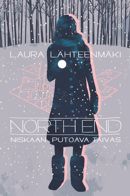 North End: Niskaan putoava taivas
North End: Niskaan putoava taivas
[North End: Falling Sky]
Helsinki: WSOY, 2012. 258 pp.
ISBN 978-951-0-38598-2
€27.90, hardback
The global success of Suzanne Collins’ The Hunger Games trilogy has spurred a boom in dystopian stories in Finland as well. The core themes of independence and friendship familiar from Lähteenmäki’s previous works are also present in this story about the impending end of the world. North End is set in the near future, around 50 years from now. This is hinted at by a reference to Victoria, queen of Sweden (currently a young princess), as a senior citizen. Recycling is a necessary part of daily life, and devices similar to exercise bikes are used to generate electricity at night. Widespread scarcity has forced people to become watchful of others, for good and bad. Tekla, a 14-year-old girl, has moved to North End with her family and is still looking to make new friends. Everyday life is thrown into disarray for Tekla and her younger brother when their separated parents get their custody weeks muddled up, and the children are left to fend for themselves. After the initial rush of freedom, the responsibility begins to frighten the siblings. Relationships and parenthood are put under the microscope on many occasions in this work, which will eventually grow into a trilogy.
Translated by Ruth Urbom
Fredrik Lång: Av vad är lycka. En Krösusroman [From what is happiness. A Croesus novel]
4 December 2012 | Mini reviews, Reviews
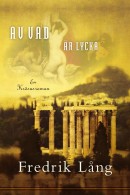 Av vad är lycka. En Krösusroman
Av vad är lycka. En Krösusroman
[From what is happiness. A Croesus novel]
Helsingfors: Schildts & Söderströms, 2012. 221 p.
ISBN 978-951-523-002-7
€20.25, hardback
What is happiness? According to the Western thought, happiness is to have, to own, and whenever possible to get even more – it is interesting to find out what our forefathers thought about the question before it was answered. This is precisely what Fredrik Lång does in this novel, the best since the ancient-inspired Mitt liv som Pythagoras (‘My life as Pythagoras’, 2005). Lång describes the Lydian king Kroisos, the richest man of his day, and his attempt to overthrow the wise Greek Solon’s idea that moderation and a contemplative lifestyle lead to happiness. Even if the driving force behind this novel is philosophical, it is brought alive with graphic depictions, extravagant battlefield scenes, intrigue and heartrending romance. Lång’s narrative is often ironic or comical, yet it still manages to emphasise the hard lives of its characters and the complete and utter inequality between master and slave, rich and poor, man and woman. Despite the immersion in the past, it is his own time Lång writes about, sometimes via shameless anachronism, sometimes subtle hints.
Translated by Claire Dickenson
Katarina von Numers-Ekman: Singer
24 January 2013 | Mini reviews, Reviews
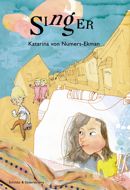 Singer
Singer
Kuvitus [Ill. by]: Jenny Lucander-Holm
Helsinki: Schildts & Söderströms, 2012. 144 pp.
ISBN 978-951-52-3013-3
€17.90, hardback
Singer by Finland-Swedish author Katarina von Numers-Ekman deals with some fairly dark childhood emotions in an intense way, but manages to avoid too much angst. Josefin is an 11-year-old girl who lives alone with her father following the death of her mother. The girl does not dwell daily on the loss of her mum, but as she grows up she finds herself missing her mother more. This novel devotes an unusual amount of space to questions of language and identity through the mother’s British background and the family’s Finland-Swedish heritage. Singer is a clever double reference: Josefin has a Singer brand sewing machine, and the key plot point centres around a singing exam. Josefin goes through a number of embarrassing experiences with her friends. Her feelings of embarrassment or shame are linked with things like poor swimming skills, a classmate’s teasing, or a friend’s grandfather’s alcohol consumption. Katarina von Numers-Ekman manages to infiltrate the world of children’s experiences without making the reader feel like a voyeur. Singer provides numerous points of access to the painful growing-up years of childhood and early adolescence.
Translated by Ruth Urbom
Runeberg Prize 2013 for poetry
8 February 2013 | In the news
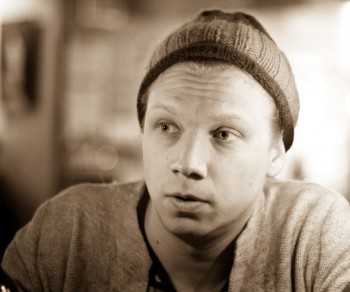
Olli-Pekka Tennilä. Photo: Aleksis Salusjärvi, 2012
The Runeberg Prize for fiction, awarded on 5 February, this year for the twenty-seventh time, went to a book of poetry by Olli-Pekka Tennilä (born 1978).
Tennilä’s second work, Yksinkeltainen on kaksinkeltaista (‘Doubly simple’, a pun: yksinkertainen = simple, kaksinkertainen = double, keltainen = yellow), published by Poesia, makes use of a child’s open-minded use of language and studies the world of the bees. Tennilä is one of the founding members of Osuuskunta Poesia, a poetry cooperative, and is currently its publishing director.
The prize, worth €10,000, was awarded on 5 February – the birthday of the poet J.L Runeberg (1804–1877) – in the southern Finnish city of Porvoo.
The jury, writer Tommi Melender, critic Siru Kainulainen and theatre manager Dan Henriksson – representing the prize’s founders, the Uusimaa newspaper, the city of Porvoo, both the Finnish and Finland-Swedish writers’ associations and the Finnish Critics’ Association – chose the winner from a shortlist of eight books. In their opinion the winning work is both ‘a structurally controlled and expressively vital whole; it demonstrates how the linguistic logic of a small child can be employed again as an adult.’
The other seven finalists were a book of essays, Toinen jalka maassa ja muita esseitä (‘One foot on the ground and other essays’, WSOY) by Markku Envall, two poetry collections, Keisarin tie (‘The emperor’s road’, Otava) by Lassi Hyvärinen and Kuolinsiivous (‘Death cleaning’, WSOY) by Eeva Kilpi, two collections of short stories, Kadonnut ranta (‘Lost shore’, WSOY) by Tiina Laitila Kälvemark and Till dig som saknas (‘To you who are missing’, Schildts&Söderströms) by Peter Sandström, as well as two novels, Rikosromaani (‘Crime novel’, Otava) by Petri Tamminen and Neuromaani (‘Neuromane’, Otava) by Jaakko Yli-Juonikas.
Timo Parvela: Maukka, Väykkä ja Karhu Murhinen [Meowser, Barker and Killington Bear]
24 January 2013 | Mini reviews, Reviews
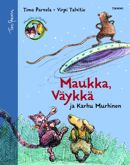 Maukka, Väykkä ja Karhu Murhinen
Maukka, Väykkä ja Karhu Murhinen
[Meowser, Barker and Killington Bear]
Kuvitus [Ill. by]: Virpi Talvitie
Helsinki: Tammi, 2012. 127 pp.
ISBN 978-951-31-6167-5
€20.90, hardback
This novel in the Maukka ja Väykkä series tells about friendship among a cat, a dog and a shrew. There is a need for more children’s books for the whole family that can be read aloud. The award-winning duo behind this title have created a book with brief chapters and an engaging setting. Maukka is an attention-seeking cat with a quick temper, while Väykkä is a laid-back, worldly-wise dog. Their life together seems to be a constant squabble over which one of them is right. The latest arrival in the animal community is a little shrew, who has a heart of pure gold despite his fearsome name. He manages to teach the cat-and-dog duo a few things about life. The shrew’s life span is much shorter than that of the cat and dog; Murhinen himself has a sanguine attitude to the matter and teaches Maukka, Väykkä and the reader a number of important things about life and death.
Translated by Ruth Urbom
Good school, bad pupils, or vice versa?
21 December 2012 | This 'n' that

Number one: Finland. The Pearson analysis, 2012
Finland is used to feeling pretty good about itself when it comes to education. In the widely respected PISA tests – the Organisation for Economic Co-operation and Development’s exams in science and literacy – Finnish schoolchildren have, since the turn of the century, been outperforming most of their peers.
A shock came in 2009 when the tests revealed that Finnish kids were only third-best at reading, and sixth in maths; but by this time they were competing against the newly participating Asian countries, with their huge concentration on education.
Now, however, a new league table, drawn up by the education publishers Pearson, places Finland right at the top (2006–2010, 40 countries). Second place is held by South Korea; third is Hong Kong. The Pearson analysis uses a broader set of criteria, using not just test results but broader measures such as how many people go to university. In a result that is causing some puzzlement in the United Kingdom, Britain is rated sixth. Entirely, say critics, because British universities are so easy to get into.
The results are indeed flattering to Finland – but Finnish children’s motivation to learn is among the weakest in the survey’s countries. In reading, mathematics and the sciences Finns’ attitudes and application were low. It looks as if Finnish children consider school a place to hang out with their friends, not a place for teaching and learning. Countries where competition is stronger breed different attitudes.
So here’s the Finnish paradox: kids here hate school – yet still end up at the top of the list.
Must be something in the water.
Rooms with views
21 August 2014 | Extracts, Non-fiction
Most of us live in box-shaped houses; the long-prevailing laws of modernist architecture relate to cubes, geometry and masses. Together with an architect, artist Jan-Erik Andersson designed a leaf-shaped house for himself. Could it be both art and architecture? In his new book he takes a look at non-cubical buildings in Finland and beyond, attempting to define what makes ‘wow factor architecture’: good architecture requires freedom from strict aesthetic rules.
Extracts from the chapter entitled ‘Det inre rummet’ (‘The inner room’) in Wow. Åsikter om finländsk arkitektur (‘Wow. Thoughts on Finnish architecture’, Schildts & Söderströms, 2014)
I remember from my childhood in the 1960s how my brother and I each lay in our beds in a little room late in the evening and stared up at the ceiling, onto which the lights from cars outside cast patterns. The patterns were constantly changing, they were like the doors of imagination onto eternity. Along with the hum of the engines they lulled me into a kind of half-stupor.
During the days the floor of the room grew to a town as we threw ourselves into a world of adventures and sped around with Formula 1 cars. Or the waste-paper bin was squeezed into a corner between the bookshelf and the wall, and the room took on the dimensions of a basketball court.
When defining a room it is difficult to distinguish between the outer, physical room, and the inner room formed by your consciousness. More…
Sanna Pelliccioni: Onni-poika saa uuden ystävän [Onni gets a new friend]
24 January 2013 | Mini reviews, Reviews
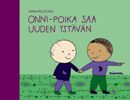 Onni-poika saa uuden ystävän
Onni-poika saa uuden ystävän
[Onni makes a new friend]
Kuvitus [Ill. by]: Sanna Pelliccioni
Helsinki: Minerva, 2012. 32 pp.
ISBN 978-952-492-674-4
€15.90, hardback
The series about a boy named Onni has become a firm favourite among preschool-aged children. Even small children’s picture books are alert to real-life changes in society; in this book – the seventh in the series – Onni gets a new neighbour: a little boy named Aram and Onni quickly become firm friends, even though they do not speak the same language at first. Their friendship across cultural barriers is explained in a straightforward manner that children can grasp. It says something about the introversion of Finnish society and about cultural differences that the friendship is initiated by Aram, who brings some rice pudding made by his mother as a treat for his new neighbours. Pelliccioni’s round-headed figures, characteristic of her style, are suitably simple. She manages to convey fine nuances in their expressions and body language.
Translated by Ruth Urbom
Umayya Abu-Hanna: Multikulti. Monikulttuurisuuden käsikirja [Multiculti. A handbook of multiculturalism]
17 January 2013 | Mini reviews, Reviews
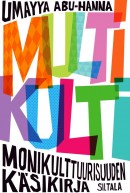 Multikulti. Monikulttuurisuuden käsikirja
Multikulti. Monikulttuurisuuden käsikirja
[Multiculti. A handbook of multiculturalism]
Helsinki: Siltala, 2012. 229 p.
ISBN 978-952-234-064-1
€ 24.90, paperback
Umayya Abu-Hanna is a Palestinian-born journalist and writer who lived in Finland for a long time and is now resident in Amsterdam. She has received awards for her work as an expert on multiculturalism. Finland’s migrant population is constantly growing, and Multikulti is aimed particularly at workers in Finland’s cultural sector; it may also be useful to others as a polemical handbook. Written in fluent, if flawed, Finnish, it contains practical instructions, tasks, and themes for discussion for those who deal with migrants. On the basis of her own experience and that of others Abu-Hanna shows clearly how migrants from outside Europe, especially Africans and Muslims, but also those who come to Finland from closer to home, encounter prejudice, racism, an involuntary lack of understanding and a lack of ‘cultural literacy’. Faults are evident at all levels of society, including the state’s cultural administration.
Translated by David McDuff
Sari Peltoniemi: Gattonautti ja muita arkisatuja [The cattonaut and other everyday tales]
24 January 2013 | Mini reviews, Reviews
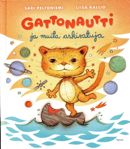 Gattonautti ja muita arkisatuja
Gattonautti ja muita arkisatuja
[The cattonaut and other everyday tales]
Kuvitus [Ill. by]: Liisa Kallio
Helsinki: Tammi, 2012. 67 pp.
ISBN 978-951-31-6576-5
€19.90, hardback
There has been a desperate shortage of short stories and fairy tales for a long time. Now Sari Peltoniemi has bravely risen to this challenge. In her previous young adult novels, she cultivated the ‘new weird’ genre, in which strange and fantastical elements encroach on everyday life. This collection can be categorised as the first Finnish children’s book that makes use of that fantasy subgenre. Peltoniemi’s ten stories also pay homage to traditional Finnish folk tales: a deceased grandfather makes a reappearance to his grandson at midnight; a little sister imagines her teenage sister changing from a fairy into a troll, as in folk tales about changelings. Everyday life is wrenched into strange or absurd situations without warning. Peltoniemi’s portrayals of children display real psychological understanding and insight. The age range for this book, for reading aloud as well as independent reading, extends from preschool to older school-aged children, as the age of the main characters is not emphasised. Liisa Kallio’s child-like, rounded illustration style does indicate, however, that the intended target group is children under 10.
Translated by Ruth Urbom
A long list of good novels
27 November 2014 | In the news
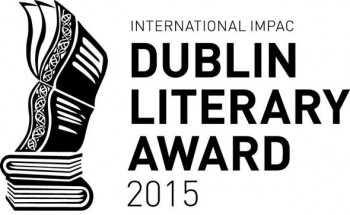 The longlist for the International IMPAC Dublin Literary Award 2015 has been announced and, among the 142 translated novels – from 39 countries and 16 original languages – are two from Finland.
The longlist for the International IMPAC Dublin Literary Award 2015 has been announced and, among the 142 translated novels – from 39 countries and 16 original languages – are two from Finland.
Mr Darwin’s Gardener by Kristina Carlson (Peirene Press, UK, 2012), a novel set in the 1860s England, is translated by Emily and Fleur Jeremiah (see the extracts in Books from Finland).
Cold Courage, a thriller by Pekka Hiltunen (Hesperus Press, UK), is translated by Owen Witesman. Both entries were nominated by Helsinki City Library.
Among the authors writing in English are Margaret Atwood, J.M. Coetzee, Roddy Doyle, Stephen King, Jhumpa Lahiri, Thomas Pynchon and Donna Tartt.
This literary award was established by Dublin City, Civic Charter in 1994. Nominations are made by libraries in capital and major cities throughout the world, on the basis of ‘high literary merit’. In order to be eligible for consideration in 2015 a novel translated into English must be first published in the original language between 1 January 2009 and 31 December 2013.
The award for a translated novel is worth €75,000 to the author, €25,000 to the translator. The shortlist of ten titles will be announced by an international panel of judges in April 2015, the winner in June.
We’ll be keeping our fingers crossed for our ex-Editor-in-Chief Kristina Carlson!
New from the archives
29 January 2015 | This 'n' that
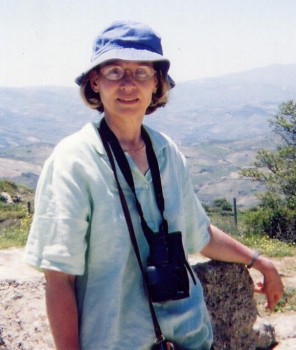
Ulla-Lena Lundberg
Low-lying, sea-girt pieces of rock strewn across the sea midway between Finland and Sweden, the Åland Islands – known in Finnish as Ahvenanmaa – are a world unto themselves. In mind and spirit they are separate from both Finland (to which they technically belong) and Sweden, giving their inhabitants, writers included, a fascinating outsider status.
This week’s archive find, an extract from Leo, the first volume of Ulla-Lena Lundberg’s trilogy set in 19th-century Åland, offers a compelling portrait of the potent mix of cosmopolitanism and (literal) isolation of the islands’ seafaring community, in which the men sail the seas and the women stay at home.
Born on Åland in 1947, Lundberg is a writer of novels, short stories, poems and other essays; her work, she says, derives from her habit of sitting under the table as a small child and listening to what the grown-ups said. She received the Finlandia Prize in 2012 for her novel Is [‘Ice’], and the Tollander Prize in 2011.
*
The digitisation of Books from Finland continues apace, with a total of 354 articles and book extracts made available online so far. Each week, we bring a newly digitised text to your attention.
C.L. Engel. Koti Helsingissä, sydän Berliinissä. C.L. Engel. Hemmet i Helsingfors, hjärtat i Berlin [C.L. Engel. Home in Helsinki, heart in Berlin]
23 February 2012 | Mini reviews, Reviews
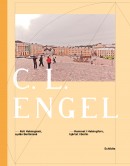 C.L. Engel. Koti Helsingissä, sydän Berliinissä. C.L. Engel. Hemmet i Helsingfors, hjärtat i Berlin
C.L. Engel. Koti Helsingissä, sydän Berliinissä. C.L. Engel. Hemmet i Helsingfors, hjärtat i Berlin
[C.L. Engel. Home in Helsinki, heart in Berlin]
Tekstit [Texts by]: Matti Klinge, Salla Elo, Eeva Ruoff
Valokuvat [Photography]: Taavetti Alin & Risto Törrö
Översättning [Translations from Finnish into Swedish]: Ulla Pedersen Estberg
Helsingfors: Schildts, 2012. 140 p., ill.
ISBN 978-951-50-2183-0
€ 31.50, hardback
The life and works of the German architect Carl Ludvig Engel (1778–1840) are portrayed in four articles by specialists in Finnish history, the history of Helsinki and the history of gardens. Engel spent almost 24 years in Helsinki, transforming it with his architectural designs. For eleven of those years, he and his family lived in a house surrounded by a large garden, both of them his own creations. Looking for work, the young Engel finally found it in the tiny northern town that was pronounced the new capital of the Grand Duchy of Finland in 1812 – both Tsar Alexander I and his successor, Nikolai I, favoured him. From 1816 onwards he designed more than twenty neo-classical buildings, among them nationally important landmarks: the Cathedral, the City Hall, the National Library and the University. Despite his mostly rewarding job as a highly regarded city planner, Engel found Helsinki cold, small and quiet, and he constantly longed for his native Berlin, which he never saw again. However, his flourishing garden gave him great pleasure. Richly illustrated with photographs, the book gives the reader an thorough and interesting picture of this city-changing man and his era.
